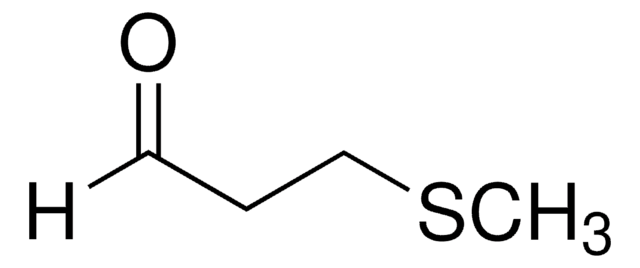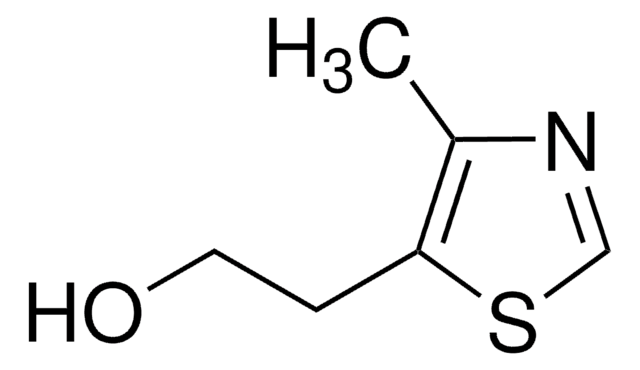W327506
Dimethyl trisulfide
≥98%, FG
동의어(들):
2,3,4-trithiapentane, Methylsulfanyldisulfanylmethane
About This Item
추천 제품
생물학적 소스
synthetic
Quality Level
Grade
FG
Halal
Kosher
Agency
meets purity specifications of JECFA
규정 준수
EU Regulation 1334/2008 & 178/2002
분석
≥98%
refractive index
n20/D 1.602 (lit.)
bp
58 °C/15 mmHg (lit.)
mp
−68 °C (lit.)
density
1.202 g/mL at 25 °C (lit.)
유사한 제품을 찾으십니까? 방문 제품 비교 안내
관련 카테고리
일반 설명
애플리케이션
- Exploring the binding affinity and characteristics of DcitOBP9 in citrus psyllids.: This study investigates the binding properties of dimethyl trisulfide (DMTS) with DcitOBP9, an odorant-binding protein in citrus psyllids, providing insights into the potential role of DMTS in pest management strategies (Pei et al., 2024).
신호어
Warning
유해 및 위험 성명서
Hazard Classifications
Acute Tox. 4 Oral - Eye Irrit. 2 - Flam. Liq. 3 - Skin Irrit. 2 - STOT SE 3
표적 기관
Respiratory system
Storage Class Code
3 - Flammable liquids
WGK
WGK 3
Flash Point (°F)
132.8 °F - closed cup
Flash Point (°C)
56 °C - closed cup
개인 보호 장비
Eyeshields, Faceshields, Gloves, type ABEK (EN14387) respirator filter
이미 열람한 고객
자사의 과학자팀은 생명 과학, 재료 과학, 화학 합성, 크로마토그래피, 분석 및 기타 많은 영역을 포함한 모든 과학 분야에 경험이 있습니다..
고객지원팀으로 연락바랍니다.













